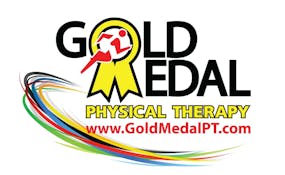
Is it just back pain?
If there’s one universal ailment in the world, it’s pretty safe to say that it’s probably back pain. Whether it’s your low or upper back, you’ve probably experienced back pain at some point in your life. Today we’re going to take a look at upper back pain — in particular how mobility of your thoracic spine contributes to upper back pain, and its effects on your overall well being.
First thing’s first, let’s talk about the anatomy of our spine. Our spine is broken up in three parts: cervical, thoracic, and lumbar. Under normal conditions, the cervical spine (neck) and your lumbar spine (lower back) should be functionally stable. While your thoracic spine (upper back) should be mobile. What we see all too often is the exact opposite; gross instability in both the lumbar and cervical spine, which leads to compensations. These instabilities send our brain and central nervous system in a panic. Our body is constantly trying to maintain some form of homeostasis. This more often than not results in the normally mobile thoracic spine to become rigid as to support ourselves.
Why is having a mobile thoracic spine important?
Well, it’s all a balancing act. We want to maintain optimal spinal health throughout our daily activities, without the need to compensate for the lack of mobility. Having an adequately mobile thoracic spine will allow you a greater quality of life within your daily activities. If you’re experiencing a knot after a long day at the office, for example; a more mobile thoracic spine will keep your back feeling like new. For athletes, greater spinal mobility will allow you to train harder, squat deeper, or even out drive your friends on the golf course.
Where physical therapy is concerned, a detailed evaluation can determine why exactly it is you have restricted mobility in your thoracic spine. Once we find the cause — which could be muscular, or joint related — we can apply the appropriate manual therapy techniques to allow you to restore that missing mobility. With increased mobility, and reduced pain as a result, we can tailor an extensive exercise program to address your specific needs, and allow you to progress towards meeting your personal goals and prevent your back from tightening up on you again.
Below, we’ve prepared some mobility self-tests, as well as a sample of some exercises that we use in the clinic, that you certainly can use at home to work on your thoracic mobility.
Thoracic Mobility Self Test
Thoracic Mobility Exercises
